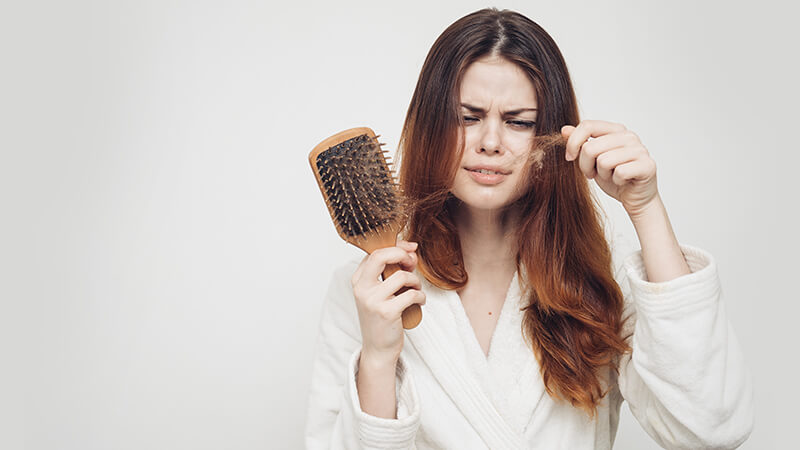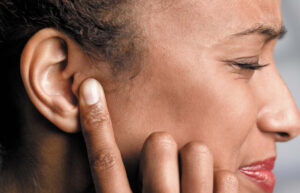Introduction
Hair fall is a common concern affecting people of all ages and genders. While it is normal to lose some hair every day, excessive hair loss can be distressing and may indicate underlying health issues. This article aims to provide an in-depth look at the various Understanding the Reasons for Hair Fall, along with preventive measures and treatment options. By understanding the factors contributing to hair loss, readers can take proactive steps to maintain healthy hair.
The Hair Growth Cycle
Before diving into the causes of hair fall, it is essential to understand the hair growth cycle. The hair growth cycle consists of three main phases:
- Anagen Phase (Growth Phase): This is the active growth phase, lasting 2-7 years. About 85-90% of the hair on the scalp is in this phase at any given time.
- Catagen Phase (Transitional Phase): This phase lasts about 2-3 weeks, during which the hair stops growing and detaches from the blood supply.
- Telogen Phase (Resting Phase): Lasting about 3 months, this is the phase where the hair falls out, and new hair begins to grow in its place.
Hair fall occurs when the hair cycle is disrupted, leading to more hairs entering the telogen phase prematurely.
Common Causes of Hair Fall
Genetic Factors
Androgenetic Alopecia (Male and Female Pattern Baldness):
- Male Pattern Baldness: Typically manifests as a receding hairline and thinning on the crown.
- Female Pattern Baldness: Usually presents as overall thinning, especially at the crown.
Genetics play a significant role in androgenetic alopecia, with family history being a strong predictor of hair loss.
Hormonal Changes
Hormonal Imbalances:
- Thyroid Disorders: Both hypothyroidism and hyperthyroidism can lead to hair fall.
- Pregnancy and Postpartum: Hormonal fluctuations during and after pregnancy can cause temporary hair loss.
- Menopause: Decreased estrogen levels can lead to thinning hair.
Polycystic Ovary Syndrome (PCOS):
- Women with PCOS may experience hair thinning due to elevated androgen levels.
Medical Conditions
Alopecia Areata:
- An autoimmune disorder where the immune system attacks hair follicles, causing patchy hair loss.
Scalp Infections:
- Fungal infections like ringworm can lead to hair fall.
Chronic Illnesses:
- Diseases like diabetes and lupus can cause hair thinning.
Nutritional Deficiencies:
- Lack of essential nutrients such as iron, zinc, vitamin D, and protein can lead to hair loss.
Physical and Emotional Stress
Telogen Effluvium:
- A temporary condition where significant stress causes a large number of hairs to enter the telogen phase prematurely, leading to diffuse thinning.
Traumatic Events:
- Physical trauma, surgery, or severe illness can trigger hair shedding.
Emotional Stress:
- Chronic stress and anxiety can disrupt the hair growth cycle.
Lifestyle Factors
Diet and Nutrition:
- Poor diet lacking essential vitamins and minerals can weaken hair and cause it to fall out.
Hair Care Practices:
- Overuse of heat styling tools, harsh chemical treatments, and tight hairstyles can damage hair and lead to breakage.
Environmental Factors:
- Exposure to pollution, UV radiation, and harsh weather conditions can weaken hair.
Medications
Prescription Drugs:
- Certain medications, including those for cancer (chemotherapy), arthritis, depression, heart problems, and high blood pressure, can cause hair loss as a side effect.
Birth Control Pills:
- Some women may experience hair thinning when starting or stopping oral contraceptives.
Prevention and Treatment
Healthy Diet
Balanced Nutrition:
- Consume a diet rich in vitamins, minerals, and proteins. Foods like leafy greens, nuts, seeds, fish, and lean meats can promote hair health.
Supplements:
- Consider taking supplements if you have deficiencies, but consult a healthcare provider first.
Proper Hair Care
Gentle Hair Care:
- Avoid excessive use of heat styling tools and harsh chemical treatments.
- Use mild shampoos and conditioners suitable for your hair type.
Protective Hairstyles:
- Avoid tight hairstyles that pull on the hair. Opt for loose styles that do not stress the hair shaft.
Stress Management
Stress Reduction Techniques:
- Practice stress management techniques such as yoga, meditation, and deep breathing exercises.
Adequate Sleep:
- Ensure you get enough sleep to support overall health and well-being.
Medical Treatments
Topical Treatments:
- Minoxidil: An over-the-counter topical treatment that can stimulate hair growth.
- Steroid Injections: Used for conditions like alopecia areata to reduce inflammation.
Oral Medications:
- Finasteride: A prescription medication for male pattern baldness.
- Spironolactone: Sometimes used off-label for female pattern hair loss.
Hair Transplant Surgery:
- A surgical procedure where hair follicles are moved from one part of the scalp to the thinning areas.
Low-Level Laser Therapy (LLLT):
- A non-invasive treatment that uses red light to stimulate hair growth.
Conclusion
Hair fall can be a distressing experience, but understanding its causes and available treatments can help manage and prevent it. By maintaining a healthy diet, practicing gentle hair care, managing stress, and seeking appropriate medical treatment when necessary, you can support healthy hair growth and reduce hair fall. This comprehensive guide aims to provide readers with the knowledge and tools needed to tackle hair loss effectively.
Key Takeaways
- Genetics and Hormones: Androgenetic alopecia and hormonal imbalances are common causes of hair fall.
- Medical Conditions: Autoimmune disorders, scalp infections, and chronic illnesses can contribute to hair loss.
- Lifestyle and Stress: Diet, hair care practices, and stress levels significantly impact hair health.
- Prevention and Treatment: A balanced diet, gentle hair care, stress management, and medical treatments can help manage and prevent hair fall.
By understanding these factors and taking proactive measures, individuals can maintain healthy hair and address hair loss concerns effectively.
















